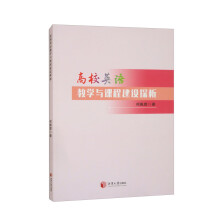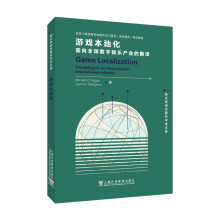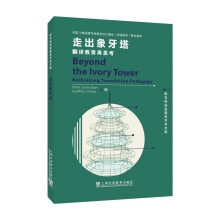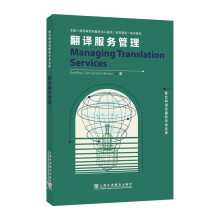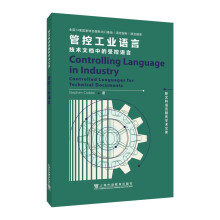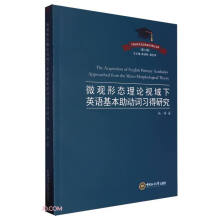Contents
List of Figures xxv
General Editors’ Preface xxvi
Acknowledgements xxviii
1 Introduction 1
1.1 Aim and readership of the book 1
1.2 Title of the book 3
1.3 Authors’ subjectivity 6
1.4 Overview of the book 8
Part 1 Conceptualizing Intercultural Interaction
2 Unpacking Culture 13
2.1 Defining culture 13
2.2 Etic frameworks for comparing cultures: multidisciplinary perspectives 16
2.2.1 Frameworks in psychology 17
2.2.2 Frameworks in anthropology 22
2.2.3 Frameworks in international business 26
2.2.4 Frameworks in applied linguistics and discourse studies 29
2.3 Ernie perspectives on culture 33
2.4 Culture and regularity 34
2.4.1 Types of cultural regularity 34
2.4.2 Culture, regularity and variability 35
2.5 Culture and social groups 40
2.5.1 Culture and religious groups 41
2.5.2 Culture and organizations 42
2.5.3 Culture and professional groups 43
2.5.4 Culture and communities of practice 45
2.5.5 Culture and multi-group membership 46
2.6 Culture and representation 46
2.7 Concluding comments 48
Suggestions for further reading 48
3 Intercultural Interaction Competence (ICIC) 50
3.1 Introduction: terminology and definitions 51
3.2 The contribution of psychology and communication studies 53
3.2.1 Goals of ICIC identified by psychologists and communication scholars 53
3.2.2 Components of ICIC identified by psychologists and communication scholars 55
3.2.3 ICIC conceptual frameworks developed by psychologists and communication scholars 58
3.3 The contribution of applied linguistics and foreign language education 63
3.3.1 Applied linguists’ concerns about criteria of ICIC 64
3.3.2 ICIC conceptual frameworks developed by applied linguists and foreign language education specialists 65
3.4 The contribution of international business and management studies 69
3.4.1 Components of ICIC identified by international business and management scholars 70
3.4.2 ICIC conceptual frameworks developed by international business and management scholars 75
3.5 Concluding comments 79
Suggestions for further reading 79
4 Achieving Understanding in Intercultural Interaction 81
4.1 The communication process and message communication competencies 82
4.2 An authentic example: misconstruals of meaning 82
4.3 Effective use of message communication competencies 85
4.4 Ineffective use of message communication competencies 87
4.5 Non-verbal behaviour 92
4.6 The communication process revisited 95
4.7 Achieving understanding through an interpreter 96
4.8 Concluding comments 99
Suggestions for further reading 100
5 Promoting Rapport in Intercultural Interaction 101
5.1 Rapport and rapport management competencies 102
5.2 An authentic example: a problematic business meeting 103
5.3 Contextual awareness 105
5.3.1 Participant relations 105
5.3.2 Role rights and obligations 106
5.3.3 Type of communicative activity 107
5.3.4 Contextual awareness and Experiential Example 5.1 108
5.4 Interpersonal attentiveness 109
5.4.1 Face 109
5.4.2 Behavioural expectations 111
5.4.3 Interactional goals 112
5.4.4 Interpersonal attentiveness and Experiential Example 5.1 114
5.5 Information gathering 115
5.6 Social attuning 116
5.7 Emotion regulation 117
5.8 Strategies for managing rapport 117
5.8.1 Orientations towards rapport 117
5.8.2 Rapport management strategies 119
5.9 Strategies for managing conflict 123
5.10 Concluding comments 127
Suggestions for further reading 128
6 Confronting Disadvantage and Domination in Intercultural Interaction 130
6.1 Impression management and disadvantage 130
6.1.1 What is impression management? 131
6.1.2 Managing and perceiving impressions in intercultural interaction 132
6.2 Stereotypes and disadvantage 137
6.2.1 Stereotypes and intercultural interaction 137
6.2.2 What are stereotypes? 139
6.2.3 Are stereotypes harmful? 142
6.3 Prejudice, conscious discrimination and deliberate domination 145
6.4 English as a world language, and disadvantage 147
6.5 Concluding comments 149
Suggestions for further reading 149
7 Adapting to Unfamiliar Cultures 151
7.1 Culture shock and stress 151
7.1.1 Understanding culture shock and stress 151
7.1.2 Managing culture shock and stress 155
7.2 Personal growth 158
7.2.1 Sensitivity to difference and personal growth 158
7.2.2 Identity and personal growth 160
7.3 Adaptation and the social context 165
7.4 Concluding comments 169
Suggestions for further reading 169
Part 2 Promoting Competence in Intercultural Interaction
8 Assessing Competence in Intercultural Interaction 173
8.1 Assessment instruments 174
8.1.1 Purposes of assessment instruments 175
8.1.2 Criteria to guide the selection of assessment instruments 176
8.2 Assessing value orientations 178
8.3 Assessing intercultural interaction competence 182
8.4 Assessing both value orientations and intercultural interaction competence 189
8.5 Assessing intercultural interaction competence in the school and university education context 190
8.6 Assessing intercultural interaction competence for certification purposes 192
8.7 Assessing and developing value orientations and intercultural interaction competence at the organizational level 195
8.8 Concluding comments 197
Suggestions for further reading 198
9 Developing Competence in Intercultural Interaction 199
9.1 The term ‘development’ and its conceptualization 199
9.2 Aims and outcomes of ICIC development 201
9.3 Developing ICIC in professional context 202
9.3.1 Preparing development interventions 203
9.3.2 Conducting development interventions: content 210
9.3.3 Conducting development interventions: methods 217
9.3.4 Evaluating development interventions 225
9.4 Developing ICIC in the school education context 225
9.4.1 Aims in school curricula 226
9.4.2 Aims and outcomes in the school classroom 229
9.4.3 Methods recommended in school curricula 231
9.4.4 Methods used in the school classroom 231
9.5 The qualification profile of the developer 236
9.6 Concluding comments 240
Suggestions for further reading 241
Part 3 Researching Intercultural Interaction
10 Research Topics in Intercultural Interaction 245
10.1 Researching intercultural interaction competence (cf. Chapters 3 and 8) 246
10.2 Researching understanding and rapport in intercultural interaction (cf. Chapters 4 and 5) 249
10.3 Researching disadvantage and domination in intercultural interaction (cf. Chapter 6) 253
10.4 Researching adaptation to unfamiliar cultures (cf. Chapter 7) 257
10.5 Researching intercultural interaction competence development (cf. Chapter 9) 261
10.6 Concluding comments 265
11 Culture and the Research Process 266
11.1 Culture and initial planning 266
11.1.1 Culture-comparative or culture-interactional research 266
11.1.2 ‘Handling’ culture in research 267
11.1.3 The challenge of decentring 269
11.2 Culture and data collection 271
11.2.1 Collecting authentic interaction data 271
11.2.2 Collecting self-report data: generic issues 272
11.2.3 Collecting self-report data: using standard instruments 280
11.2.4 Collecting semi-experimental data 284
11.2.5 The researcher-participant relationship 285
11.3 Culture and data analysis and interpretation 286
11.3.1 Analysing quantitative data 286
11.3.2 Interpreting the ‘meaning’ of qualitative data 288
11.3.3 Interpreting intercultural interaction data 289
11.3.4 Epistemological positions and data analysis 289
11.4 Culture and research ethics 290
11.4.1 Differing perspectives on ethical procedures 290
11.4.2 Representation of groups 291
Suggestions for further reading 291
Part 4 Resources
12 Resources 295
12.1 Books 296
12.2 Journals 300
12.3 Associations and conferences 304
12.4 Websites 307
12.5 Assessment instruments 311
12.6 Resources for developing intercultural interaction competence 319
Books 319
Games and simulations 320
Internet resources 322
Videos, DVDs and hybrid materials 322
Publishers of videos, DVDs and hybrid materials 324
References 326
Index 353
展开

